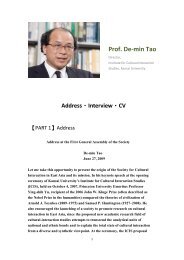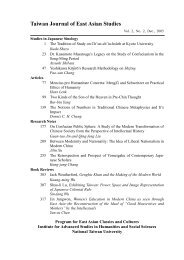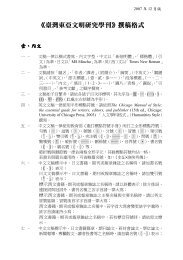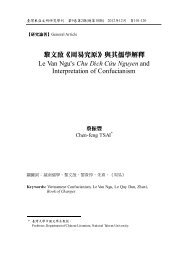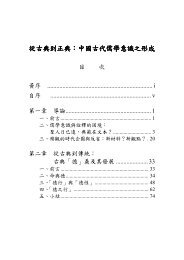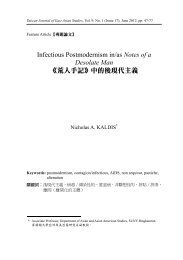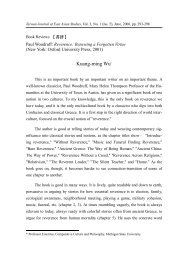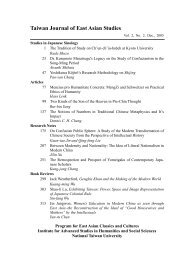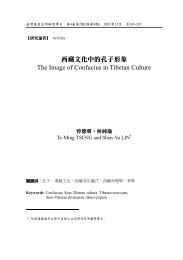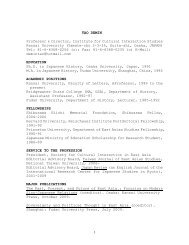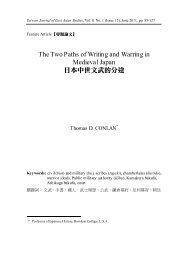臺灣東亞文明研究學刊 - 東亞經典與文化研究計畫 - 國立臺灣大學
臺灣東亞文明研究學刊 - 東亞經典與文化研究計畫 - 國立臺灣大學
臺灣東亞文明研究學刊 - 東亞經典與文化研究計畫 - 國立臺灣大學
Create successful ePaper yourself
Turn your PDF publications into a flip-book with our unique Google optimized e-Paper software.
164 Taiwan Journal of East Asian Studies, Vol. 4, No. 2 (Iss. 8), Dec., 2007<br />
extinguish industry or repress occasional exertion, may be taken as a characteristic<br />
of the whole people." 32<br />
The jeremiads of James Mill and Mountstuart Elphinstone on the topic of<br />
Hindu character resonated before the appearance of the heroic male culture driven<br />
by Macaulay, Bentinck, and, of course, Kipling. But already the hosannas to Indian<br />
culture had subsided: the great fashioners of costly luxuries would no longer escape<br />
censure. This was not a tolerant society, since everyone now knew that the widow<br />
of a Brahmin must perish on his funeral pyre. For the time being, none spoke of<br />
splitting Hinduism off from Islam: Indian society could be individualized to a<br />
certain degree, as sexual right replaced national character. It was now the femininity<br />
and the very lives of Hindu women that needed to be protected. But a certain<br />
continuity could not be extinguished: the Hindu remained the other of British<br />
society, a partner with whom consummation would forever be postponed, a partner<br />
whose commercial cunning could infect, a partner whose love of luxury and of a<br />
life of ease threatened the people of Britain. ♦<br />
32 Ibid., pp. 370-371.<br />
♦ 責 任峌 編 輯杧 : 林 沛 熙庰 。<br />
xvi



